By Julio A. Montes
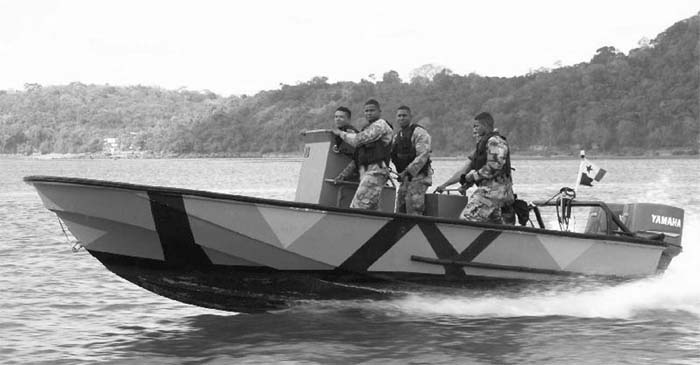
Almost 20 years ago in December 1989, in Operation Just Cause, the US invaded Panama in an effort to depose and capture General Manuel Antonio Noriega. As a teen, the author had the opportunity to visit the original Comandancia installations and thirty years later had a chance to visit the new installations of the Public Force built over the ashes of the former Comandancia. During this visit the Head of the Department of Public Relations of the Panamanian Public Force, Didacio L. Camargo, assured me that the troops observed in the corridors of the base were just police agents who had returned from operations in the mountains – after all, the Panamanian Defense Forces ceased to exist in December 1989. These police agents sure looked as seasoned soldiers dressed in OD fatigues, jungle hats and boots, assault vests and AKMs. The equipment is needed in order to patrol the vast and dangerous Darien jungle that borders Colombia and the broken terrain along the Costa Rican side. These were members of the Frontier Police; an elite outfit trained and equipped to operate deep in the forest in charge of planning, organizing, directing and executing actions and operations to guarantee the territorial national integrity.
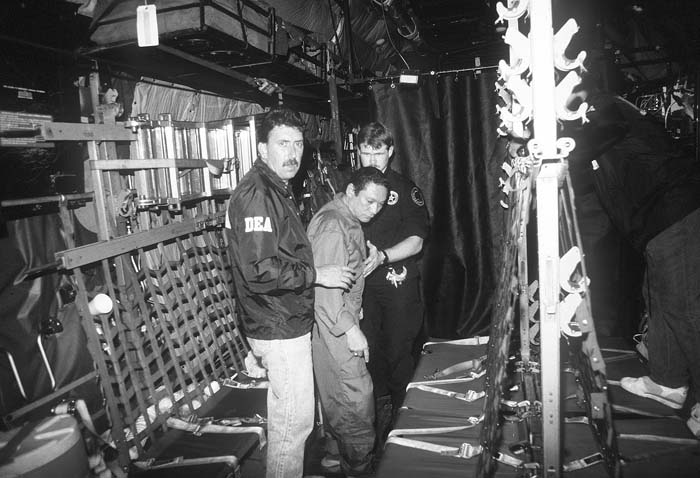
Between 1953 and 1983, military and police duties fell on the National Guard. With the passing of Law No. 20 in 1983, the National Guard was divided into police, territorial, air and maritime forces, and then, on December 23 of the same year, Law No. 44 was passed transforming the agency into the Defense Forces (PDF). The US launched Just Cause on December 20, 1989, bringing to a sudden halt the development of the Panamanian military forces. The Panamanian Public Force (PPF) was created under Executive Decree No. 38 on February 10, 1990 to replace the PDF. The PPF is a law enforcement focused institution comprising the National Police (PNP), a Judicial Technical Police (PTJ), an Institutional Protection Service, the National Maritime Service (SMN) and the National Air Service (SAN). A constitutional amendment passed in 1994 abolished the military. Law enforcement units that are separated from the PPF, such as the Technical Judicial Police, also are directly subordinate to civilian authorities. Drug traffic and protection of the Panama Canal have become a major concern of this new entity, and today, the agencies involved in drug law enforcement are the Panamanian National Police (PNP), the Technical Judicial Police (PTJ), the National Maritime Service (SMN), the National Air Service (SAN), the Customs Service, the Joint Information Coordination Center, and the Drug Prosecutor’s Office.
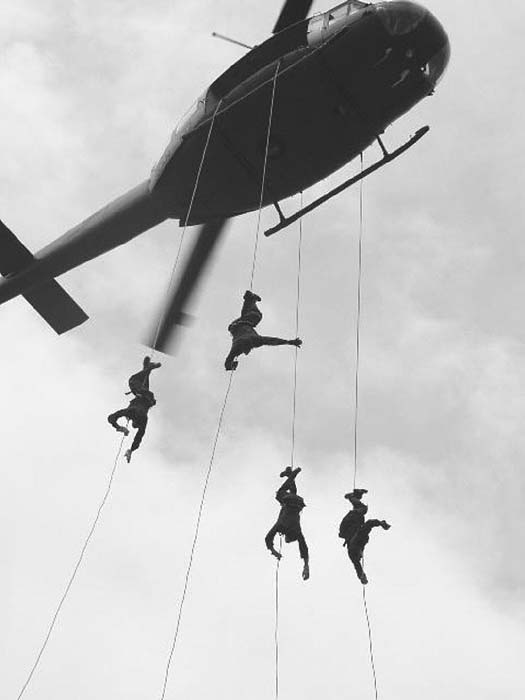
The Panamanian Public Force
The invasion smashed the Defense Forces and most of the captured equipment was destroyed. The US would not allow another military establishment to be organized in Panama. However, the US-Panamanian Treaty required a force to protect the Canal to be in place before the transfer of 2000, and this originated rumors that the transfer would not take place. Against all odds, the transfer did take place as scheduled, and from the ashes of the Defense Forces the government created the Public Force (PPF) under the Ministry of Government and Justice.

Of the PPF, the Servicio de Protección Institucional (SPI) responds directly to the Office of the President, and was established in 1990 by Carlos Barés. The SPI deploys some 600 men, well-trained and equipped with HK MP5, Glocks and other equipment, for the protection of VIPs and intervention tasks. They are distinguished by the use of black uniforms.
The PTJ (Policía Técnica Judicial) operates under the control of the Panamanian Supreme Court since 1999. The PTJ is Panama’s equivalent of the U.S. FBI and has a small anti-narcotics unit with some 80 members responsible for enforcing national narcotics laws. The PTJ is the lead agency for conducting chemical and criminal investigations, including illegal and pharmaceutical drugs, and it has a proactive task of monitoring chemical shipments imported to, exported from, and transiting Panama. The DEA has a Memorandum of Understanding (MoU) with the PTJ.
Panama’s Customs Service functions as a fiscal organization under the Panamanian Treasury Department. Customs enforces contraband laws and collects import duties. Criminal violations involving other matters, when uncovered by the Customs Service, are referred to the already mentioned PTJ.
Today the Ministry of Government and Justice dedicates some $159.1 millions to security concerns. The National Police (PNP) is its main element of the Ministry’s PPF, deploying some 15,000 agents nationwide. The invading US forces captured between 16 and 19 armored vehicles, but Mr. L. Camargo tells us that the PPF lacks any such vehicle, and the force remains equipped with Infantry equipment only.
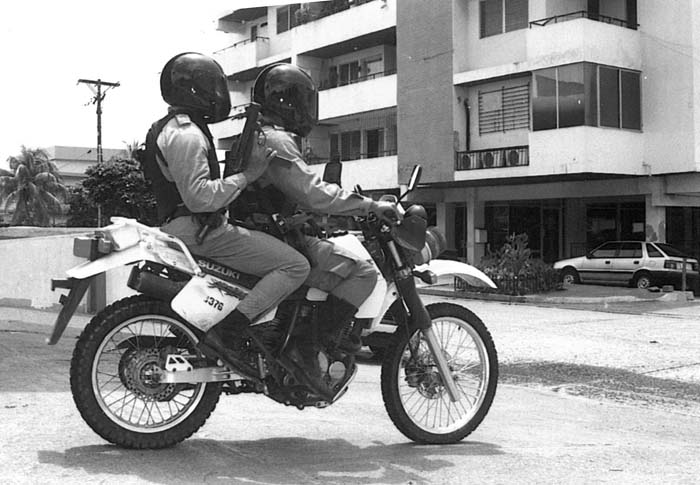
By September 1, 2004, the National Police (PNP) had been under the command of Gustavo Pérez. Its forces in Panama City had been divided into Panamá Metro Este, Panamá Metro Norte, and Panamá Metro Oeste, and police precincts at ZP Bocas del Toro, ZP Chiriquí, ZP Darién, ZP Herrera, ZP San Miguelito, ZP Arraijam, ZP Coclé, ZP Cora, ZP Colón, ZP Kuna Ayala, ZP Los Santos, and ZP Veraguas. Additional related tasks are trusted to the Penal Security Police, the Crown Control Unit, Children and Teens Police, the Information and Investigation Direction, and Transit Operations. The Canal Zone Police in charge of the waterway and the other specialty units mentioned above add to the operational status of the PNP. The Service Support Group comprises three units. Of these, the Motorized Police Unit, established in 1993 at Albrook and trained by Venezuelan advisers is equipped with Suzuki DR-350 motorbikes. The unit is considered an elite outfit, and its members are designated Linces, and sport either OD or black fatigues, assault vests, protective helmets, and carry either Uzi or Peruvian MGP-84 Submachine Guns. Under the Specialty Services Direction we found the Maintenance & Riverine and Coastal Operations Unit, the PNP’s own naval flotilla equipped with 10 launches and based at Building 807 from the former Kobe Military Base. Under the same Direction we found the Air Police Unit, a separate entity from the SAN, and established on December 4, 2002, with a MD500E PNP HP1 donated by Taiwan. The Border National Direction keeps troops along both borders. The PNP was equipped with a few old T65 rifles, but now the AKM and variants have been widely distributed along with a few support weapons. The Special Operations Units carry the MP5 and HK53 SMGs.
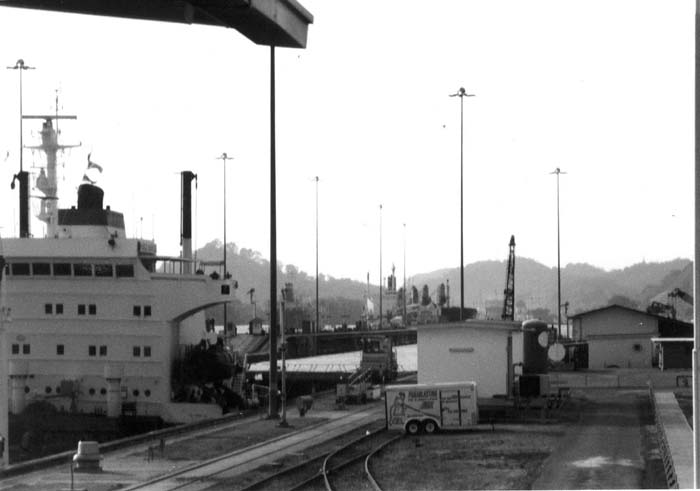
Without a doubt, the Colombian border remains as a major security concern. Prior to the US invasion of 1989, the Colombian border was watched by elements of the Peace Battalion and the 3rd Diablos Rojos Company. US Army troops took over the tasks momentarily and then it passed to the hands of contractors for about 3 months until the establishment of the Chiriquí Police Zone. However, incursions by Colombian FARC guerrillas were detected at Choco-Urabá region and in January 1993, FARC guerrillas kidnaped missionaries along Púcuro. By October 1996, Colombian paramilitaries had attacked Armila, at Kuna Yala. These armed activities forced the establishment of the Darién Police Zone in 1997, which deployed a specially trained unit of 50 commandos to chase bandits up in the mountains. The problems persisted, and on April 20, 1999, the FARC attacked Sapzurro, followed by another attack on November 19, against Bonga, also at Kuna Yala, forcing a reinforcement of police along Comarca de San Blas. On April 11, 2003, the governments of Panama and Colombia signed the Combitrom Agreement (Comisión Binacional Fronteriza), a Police Cooperation Treaty to increase police and military presence along the border, and today the border police division deploys considerable assets.

The SAN, National Air Service, is responsible for protecting Panama’s air space and conducting aerial patrols. It also provides crop eradication support, humanitarian flights, aerial intelligence, and reconnaissance support to the various law enforcement entities of Panama. The SAN has 393 personnel, providing support for counterdrug operations, and it deploys a platoon conforming the Unidad Aérea de Fuerzas Especiales (UAFE), providing for intervention tasks. The SAN was established in 1990, and it operates from Air Stations at Santiago and David. The 1st Squadron operates six Aviocar C212s; the 2nd Squadron uses UH-1Hs, and a single Bell 407 (SAN 210) donated by Taiwan. After the US invasion of 1989, ENAER (Chile) received a contract for 1.19 millions Balboas (equivalent to the same in US dollars) for the recovery and overhaul of seven T-35 Pilláns, and today the aircraft are flown by the 3rd Squadron.
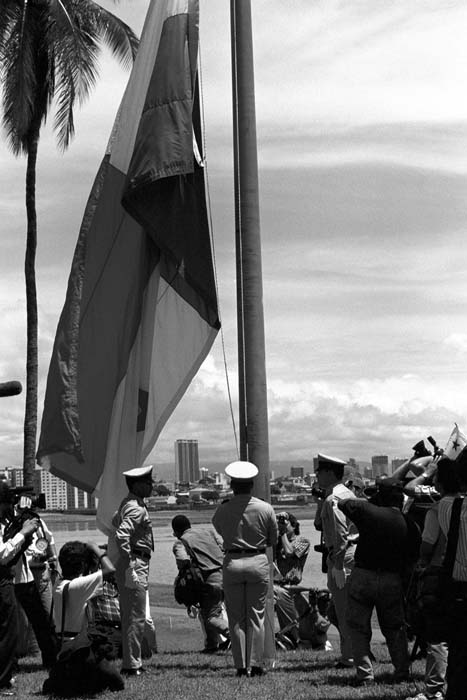
The SMN (National Maritime Service) is responsible for patrolling Panama’s waterways, operating 37 patrol craft to patrol Panama’s 2,800 kilometers of shoreline and 1,480 islands. US sources indicate that the service endeavors to maintain three patrol craft in the coastal waters of the Chiriqui Province (Pacific), and two patrol craft in the Bocas del Toro (Atlantic-Caribbean) area, to enforce economic and environmental laws as well as providing some deterrence to a full range of illegal activities. The SMN traces its origins to the Departamento de Operaciones Marinas established by Torrijos in 1968; this becomes the Naval Force in 1983, moving operations to Fort Amador. During Just Cause, US forces sank the patrol boats P-202 Presidente Porras in Balboa and P-101 Zarati at the Manzanillo Bay. One of the boats was recovered later.
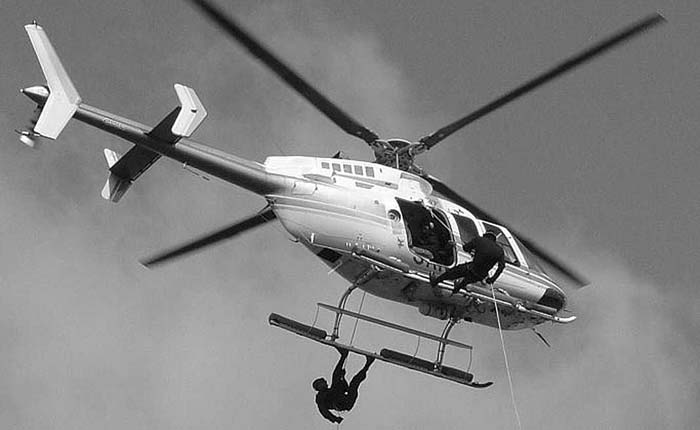
With the establishment of the SMN in 1990, the government chose the Naval Base at Largo Remo as the first Naval HQ. The SMN developed from that point on, and now accounts for some 600 elements operating from 6 bases and 10 observation posts. In 1991 the SMN occupied installations at Flamenco Island, and in 1998, the former Marine Barracks in the Cocolí Naval Base. A little later, the service expands to Pier 3, at the old Rodman Naval Station, converting into the Vasco Nuñez de Balboa Naval Base, and the Atlantic Flotilla becomes operational at Coco Solo. Later, the installations at former Fort Sherman become the Cristóbal Colón Naval Base, and Naval Observation Posts (POM – Puestos de Observación Marítimos) are established at Taboga, San Miguel, Punta Cocos, Saboga, Pedro González and Otoque Oriente & Occidente as well as the Chimán District in Chimán, Brujas and Gonzalo Vásquez. The Service has established the Cocolí Naval Base Communication Center with the task of coordinating the maritime services.
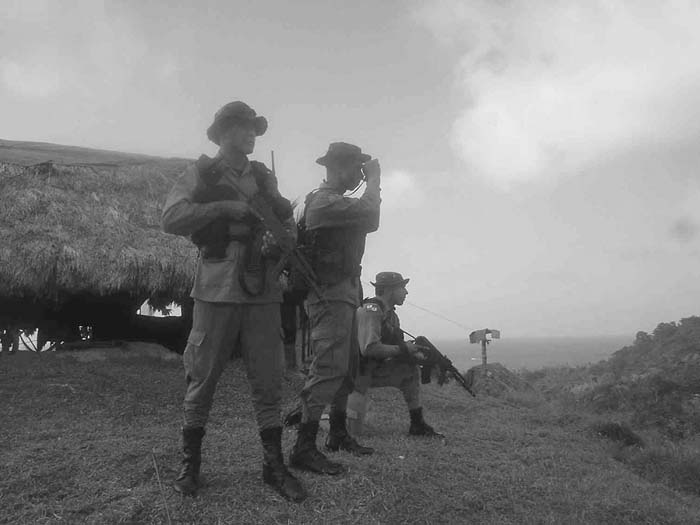
The SMN has a Marine outfit, which has received training and equipment from the Spanish Civil Guard. The Panamanian Marines and Naval Commandos have their origins with the 1st Compañía de Infantería Naval of the FDP, which operated from Coco Solo, along with the Pelotón de Comandos de Marina (Naval Commandos Platoon) from Fort Amador. Both outfits would be disbanded soon after Just Cause, and replaced with elements of the new SMN. Today, the Maritime Service deploys a Grupo de Operaciones Subacuáticas (Diving Operations Group) under capitán de Corbeta Carlos Quiroz Abrego, qualified for Tactical Diving Operations. In addition, the Naval Infantry element, Infamar (Infantería de Marina), comprises a Grupo de Operaciones Especiales (GOE) and a Grupo de Seguridad. The Special Forces Group is charged with drug interdiction and boarding.
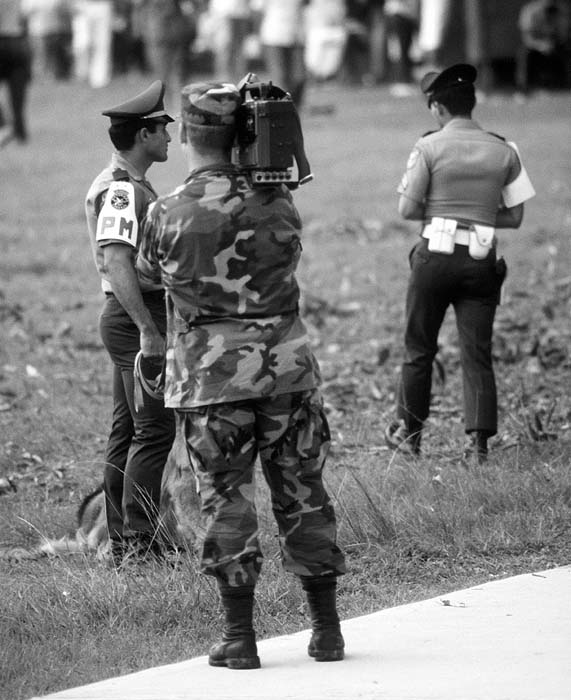
The SMN has received considerable assistance from the US, including a modified landing craft delivered in May 2004, and baptized SMN “Gral. Esteban Huertas” A-402, which arrived from Roosevelt Road Naval Base in Puerto Rico to Base Naval Vasco Nuñez de Balboa, in Panama. With funds from the US Embassy six “Eduardoño” style go-fast boats were rebuilt and donated to the SMN in 2004. Another four boats followed these, and all have new gasoline tanks, twin 200hp Yamaha engines, and radars, Global Positioning Systems (GPS), among other significant enhancements. They have a maximum speed of over 35 knots and its radar has a 12 nautical mile range. Two additional units followed in 2005, along with $50,000 in modern counter-narcotic equipment, and five tactical military vehicles for the PNP, and 18 heavy-duty vehicles for the Public Force.
The SMN was under the command of Ricardo Traad Porras, but in a change of fortunes, Traad Porras was first removed and soon after arrested, in mid-2007 accused of money-laundering. Several other officers were also arrested after a DEA sting operation.
The U.S. Coast Guard Attaché’s Office and the DEA have worked with the GOP to conduct multiple large-scale maritime law enforcement operations to interdict drug shipments in Panama. The operations also provide training in hot pursuit and the boarding of vessels in accordance with international law. These exercises allow both U.S. and Panamanian personnel to gain experience in developing communication, aviation, and search plans. Realizing that the most important material of the SMN flotillas are the five Point class vessels transferred from the USCG, every two years several Latin American countries meet in Panama under exercise Round Out to learn techniques in operations and maintenance of the Points. In order of developing a comprehensive defense of the Canal, the Panamanian government and the US counterpart sponsor a bi-annual exercise attended by Chile, Canada, Ecuador, France, Colombia, Dominican Republic, Peru, Argentina, Mexico, Honduras, Panama, and the United States and designated Panamax. The goal of the exercise is to prepare for the execution, development of standardization and maritime interdiction techniques, rules of engagement, security, and develop command and control of multinational forces in case of emergency.

| This article first appeared in Small Arms Review V12N6 (March 2009) |











